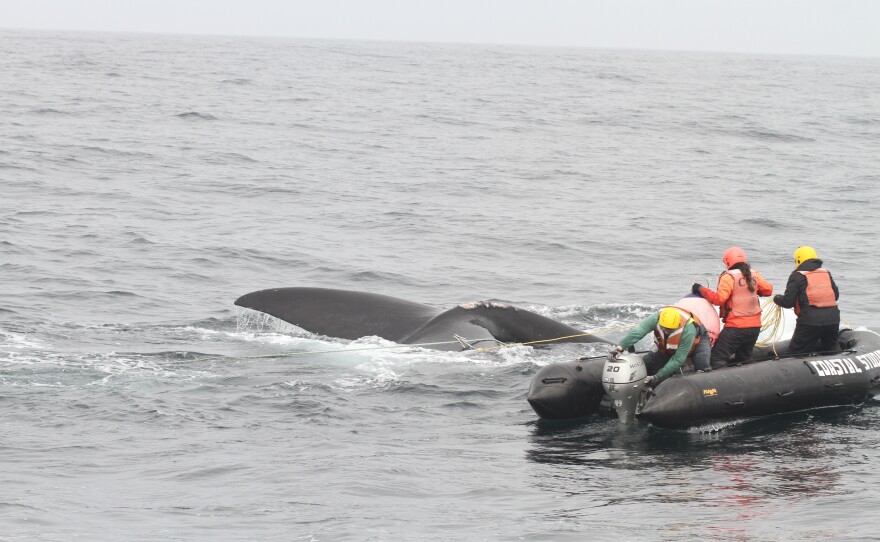Fishing gear is a hazard to whales. When they get caught in fishing lines, it’s called “entanglement” and it puts them at risk for injury and death.
The National Oceanic and Atmospheric Administration (NOAA) keeps track of the incidents, and its latest report, released this month, shows data from 2023. That’s when 64 large whales were found entangled in fishing gear in U.S. waters.
That confirmed number was down from the previous year, when there were 67 incidents.
Twenty-six percent of these whales were found off the California coast. Twenty-three percent were off the coast of Massachusetts.
Ben Grundy, with the Center for Biological Diversity, said when whales are caught in fishing gear the result can be death from drowning.
“And if it’s not death itself it can result in serious injury. We’ve seen whales with amputated fins and amputated flukes and whales with gear caught around their mouths,” Grundy said. “These whales can carry hundreds of pounds of gear for hundreds and even thousands of miles.”
Grundy added that for every confirmed whale entanglement there are about ten that go undetected.
In California, whales often get caught in the vertical lines connecting a buoy to a sea-bottom trap, used for catching Dungeness crab.
The NOAA report appeared to have some good news. Not only were the 2023 numbers down from the previous year, they were also lower than the average for the 16 years prior to 2022, which was just under 72.
But Grundy said the dip in numbers was small and not necessarily a hopeful sign.
“Though I guess I’m pleased to see the number didn’t get worse compared to the year prior,” he said. “We’re still seeing a large number of entanglements. And unfortunately there’s no good level of entanglements when we’re seeing marine mammals caught in gear.”
He said some better news may be seen in the development of new fishing equipment. So-called pop-up gear eliminates the vertical line from the seabed to the ocean surface, described above, and that makes it much safer for whales.
The majority of entangled whales, according to the NOAA report, were humpbacks. The second most common were gray whales.






